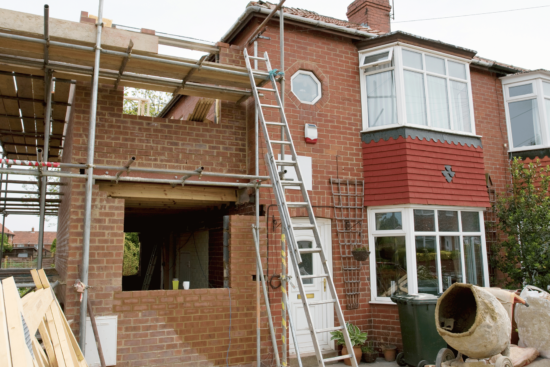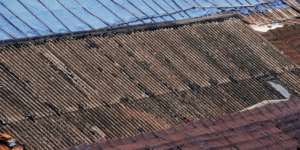© All Rights Reserved | Roof Replacement and Repair - Zaman Roofing LLC. | Website Design & CT SEO Powered by High Point SEO CT
- Google Rating5.0Based on 33 reviewsZaman Roofing - CT Roofing Contractors & Roof Repair5.0Sergey Y."Zaman Roofing” recently completed a roof replacement project in our condo complex, and we are extremely satisfied with their service. From start to finish, their team demonstrated professionalism, efficiency, and exceptional craftsmanship. They were prompt in their communication, providing detailed explanations and answering all our questions. The crew arrived on time, worked diligently, and completed the project within the estimated timeframe.Not only did Zaman Roofing exhibit outstanding technical skills, but they also ensured minimal disruption to our daily activities. They took great care to protect our property, cleaning up thoroughly each day and leaving no trace of debris behind.The quality of the new roof is outstanding. Zaman Roofing used top-grade materials and paid attention to every detail, resulting in a sturdy and visually appealing finished product. The roof has significantly enhanced the overall appearance of our condo complex.We would highly recommend Zaman Roofing to anyone in need of roofing services. Their professionalism, expertise, and attention to customer satisfaction make them a reliable choice for roof replacements. We are grateful for their excellent work and would not hesitate to hire them again in the future.Christopher Z.Zaman Roofing was AWESOME!!!! This is my third time doing a roof in CT on my third home and Zaman did an outstanding job on my rather unique roof line. They even replaced a skylight. I needed a Roof Contract in place before insurance would allow the purchase because the seller was a DeeBag. Zaman worked with my realtor, banker, etc and even waited patiently while the seller delayed the process by 4 months. The week I closed, Zaman Roofing was up and at em. Stripping, prepping and replacing. In and Out. Property was nice and clean after the work was complete. I would highly recommend.Steve TZaman Roofing, located in Berlin, CT, truly excels in providing top-notch roofing services. I am absolutely thrilled to give them a well-deserved 5-star review for their outstanding work. They have proven themselves as experts in roofing Berlin CT, and I couldn't be happier with the results.When it comes to roofing in Berlin, Zaman Roofing stands out from the competition. Their team of skilled professionals demonstrated exceptional attention to detail during the installation of my new roof. They meticulously handled every aspect of the project, ensuring both aesthetics and durability were top-notch.What impressed me the most was Zaman Roofing's commitment to customer satisfaction. From my initial contact with them, they were responsive, courteous, and eager to understand my specific roofing needs in Berlin. Their exceptional customer service throughout the entire process made me feel valued as a client.Zaman Roofing's expertise in roofing Berlin is truly commendable. They have an extensive portfolio of successful projects throughout Berlin, CT, showcasing their skill and knowledge in a variety of roofing styles and materials. Regardless of the complexity of the job, they have the necessary resources to deliver exceptional results.I cannot emphasize enough how satisfied I am with Zaman Roofing's services in Berlin, CT. Their professionalism, reliability, and dedication to their craft are unparalleled. If you're searching for exceptional roofing services in Berlin CT, Zaman Roofing is the company to choose. They will exceed your expectations in every way.In conclusion, Zaman Roofing unquestionably deserves a stellar 5-star rating for their exemplary roofing services in Berlin, CT. Their expertise in roofing Berlin and roofing Berlin CT shines through in their exceptional workmanship and customer service. I highly recommend Zaman Roofing for all your roofing needs.Gary G.Zaman replaced the roof on my 2,200 sq. ft. colonial in 2015. The workmanship was perfect. Unfortunately, over time, the top-of-the line shingles discolored. He was totally supportive in getting the manufacturer to replace them at no cost to me. He just replaced the roof with the new shingles. It was another perfect job. It was completed in one day. The crew was great and they cleaned the area spotless.Chris DWe used Zaman Roofing for our Roof and Gutter Replacement, I acquired 5 quotes for the work and found Zaman to be the most reasonable, it was a Good Decision to choose Zaman Roofing, Seweryn was Professional in every aspect and the Clean-up was nothing short of Amazing, I would Highly Recommend using Zaman RoofingRobert D.Excellent Service and Value - great crew and easy to deal with - highly recommended !Sunghoon P.Great work and reasonable price. I am so happy with their service. I asked a bunch of questions before and after the service and his responses were very prompt and straight to the point. Highly recommend.Adrienne M.I am so pleased that I used this company. My new roof looks fantastic. Such a hard working crew. Seweryn was informative and professional. Price was very completive. Don't hesitate to use them you will be very satisfied. Highly recommend!Nancy M.Good communication, timely response and knowledgeable. Very happy with our experience and highly recommend this company.Beata M.We used Zaman for our roof replacement recently and are very pleased. They replaced our roof in one day and gave us a very competitive quote. Good quality of work. Highly recommended.Lori K.They were here when they said they would. Professional & left everything neat ,cleaned up everything. They were in & out in a day & a half. Would recommend Zaman roifing.Dan R.A+ service, professional and quick response time.Anna G.Zaman and his crew provide great workmanship they installed new roofs they take great pride in the work they do. They were punctual and did a amazing job with the roof installation and clean up. Highly recommend Zaman Roofing to family and friends. Thank you for the opportunity to work with such a amazing contractorScott M.Awesome contractor, I would highly recommend him to family & friends. Seweryn & his crew were here on time & worked diligently. They were the happiest workers I've ever dealt with (I am a former construction project manager with the Federal government). Any & all questions were answered. My neighbors couldn't believe they finished the job in one day & complimented how great the new roof looks.Clement D.Great roofing contractors. I love to recommend it to my friends and family.Karen 9.With the quality, price, timeliness, all round nice guy and great crew, Zaman Roofing LLC is what other companies aspire to be.... Clean, helpful and a pleasure to recommend....james C.Excellent experience from start to finish, all appointments and work times met in a timely fashion, workmanship and clean up left nothing to be desired.Would be a definite recommendation, very pleased.Margaret B.I had obtained multiple quotes and did my due diligence research and Seweryn Zaman came back with fair price and good recommendations. He was professional, explained everything that he was going to do and never once he rushed me during decision process. He showed up on time with his hard working crew and finished my roof in one day. I was amazed with his crew who worked like busy bees. Very impressed with the clean up process and the end product. Two months after he finished my roof he was still helping me deal with the insurance company making sure I had everything I needed. Thank you SewerynSteve B.Very professional and easy to work. The crew came in, replaced my roof and then cleaned up everything! Highly recommended.Jim O.Competitive quote among four others. Seweryn Zaman provided larger color samples of the shingle colors we were interested in. He obtained the building permit, showed up on the day expected with his entire crew. Our older roof was on 24" trusses and needed more plywood replaced than anticipated. He got the additional sheets replaced on the day of the re-roofing. The crew worked with him late until the job was done and picked up every piece of old debris. The roof passed final town inspection with no concerns. Zaman Roofing is easy to deal with; he's responsive on text messages and phone calls. I used them in the past for an emergency repair and he found a well-hidden leak from the builder.Dale C.The crews did a good job, and the leader of the crew did a great job when they replaced the roof of my house in Farming on 7/6&7 this year. When they worked on the project, they worked professionally and in detail. We are very pleased with the work they have done, and highly recommend people to have the company worked on their roof projects.Forrest B.Zaman's was very professional, excellent quality of work and very responsive to our needs. This roofing experience was excellent from start to finish and provided an excellent value. Would certainly recommend them to any friend.Yonatan M.We used Zaman Roofing to replace our roof in 2019 and could not be happier with the service and product. A highly professional company and great personal interaction with the owner. The workers took great care of our landscaping, and the owner was there frequently to supervise the work and take care of finishing touches like flashing the chimney. We have had zero issues since then and highly recommend this company.Quinn V.Zaman was awesome. He was communicative, on-time, and was able to give me a quick inspection of our roof despite the rain. I rarely have a contractor tell me that I didn't need to spend any money, but Zaman told me my roof was fine for the next several years.magdalena K.We recently used Zaman Roofing to replace our 26-year-old roof. Right from the start they were great! Sevy was extremely professional and knowledgeable and gave us a great quote. Everything was done as they described and the final project looked great. The owner was on the job from start to finish as he promised.Ariadna G.Our experience with Zaman Roofing was excellent. I was very impressed with both their work and their customer service. Seweryn was very knowledgeable and professional.Larry G.What a wonderful business. Very responsive. They showed up exactly when expected, completed the project quickly and accurately and left no trace after clean up. All with a very competitive price. I would highly recommend Zaman to anyone looking to have roofing work done.STEVE R.I was very pleased with the roof and gutter repairs performed by Zaman Roofing on two of my buildings. Good workmanship and fair prices, I would recommend and use again.Danielle D.These guys stripped and reshuffled my roof is 1 day! They did an awesome job. Roof is beautiful. He uses a dump trailer which is great and they cleaned up well. Very happy with the work. Also pricing was fair.

Roof Extensions: An Expert Guide
Category: Roofing • July 25, 2024
Loft conversions are the most common form of home extension, where space is created by extending up rather than out, thus providing more usable living space without relocating. That is why loft conversion services are preferred by homeowners, as they create another room, be it a bedroom, bathroom, office, or living space, within the existing roof structure.
Here is the basic information you will need regarding roof extension: the most important factors to consider when planning for roof extension, the advantages and the disadvantages of the project, legal requirements that you have to adhere to, costs that you will incur when undertaking the project, and the steps that you must follow to have your roof extension project completed. Take a closer look at this article to learn all the essential things about roof extensions.
Types of Roof Extensions
There are two main types of roof extensions:
Rear Dormer Loft Conversions
The rear dormer extension can go right from the back of the original roof design of the house. This creates a compartment with a light wall in the form of a vertical window so that what would otherwise be a black and cramped space under the eaves is lit. Since dormer extensions provide additional volume, the amount of usable space and headroom are both significantly increased.
Roof Lift Loft Conversions
Roof lift loft conversions involve raising the roof to a higher level and making the walls go upwards to provide the inhabitants with more open space and elevated roof heights. Unlike other types of extensions, dormer windows are not constructed for a roof lift extension, relying on roof lights, skylights, or large gable end windows for lighting. Roof lifts demand more structure than volume yet give larger, variable room layouts.
There are several critical considerations before embarking on a roof extension project:
- Budget – Loft conversions are affordable and can cost anywhere between $20,000 and $50,000 depending on its size, design, and necessary structural work. Be realistic about costs.
- Existing Layout/Foundations – This would require an engineer to evaluate the suitability of extension work.
- Planning Permission –Loft conversions may not need planning permission, especially if a homeowner wishes to create up to a 40m3 space. However, it is always essential to consult the local authority.
- Building Regulations – For construction, it is mandatory to seek approval of the Building Regulations even if the planning permission is not sought.
- Access – Consider how furniture or materials will be lifted during work.
Roof Extensions: Advantages and Disadvantages
Roof extensions offer many benefits but also some downsides to consider:
Pros:
- Expand your home, but not to another living area
- Low investment return ratio if compared with some home extension options
- Less expensive than constructing a second story in a new building
- Design an area that can be closed to form a living space
Cons:
- Disturbances that occur when the conversion work is proceeding
- Construction work that may or may not entail additional technical work
- Effect on the kind of roof that is currently in place
- Prohibitive on the placement of windows or doors
- Some storage space in the loft may be sacrificed in an attempt to achieve the desired objective.
Approved Document for the Roof Extension
Structural Stability
As provided for by the building regulations, you also need to protect or enhance the stability of the existing roof structure. This is done by specialist structural engineering assessments.
Fire Safety
There are separate requirements for fire separation between the conversion and the floor below. Some of the walls and ceilings will require a fire rating and, therefore, insulation.
Access and Use
New loft space needs to be made easily accessible while ensuring its safety, and the staircase must be a permanent structure; it must not be over 50 degrees in slope. All openings below 800mm from the stairs must be protected with safety glazing.
Thermal Insulation
High insulation intensity is necessary to meet energy performance requirements. This comprises roof and attic insulation like that between the rafters, exterior walls, especially the wall cavities, and windows, with improved thermal performance.
What Will It Cost?
As much as the above steps are followed, below is the general cost range you are expected to pay for a professional loft conversion company. The cost range which people should expect to pay ranges from $20,000 to $50,000+. The cost of getting a professional company to do the loft conversion for you varies depending on the size of the room, the design of the loft, and a number of other factors, which include:
- Civil Works
- Roof works, new rafters, felt, battens, slates/tiles
- Stairs
- Windows
- Plumbing, electrics, heating, and lighting
Conclusion
Loft conversions are a sensible home improvement venture since they convert what would otherwise be wasted space into the square footage of your choice in function and form. In the cases where the roof extension is well planned and prepared following the guidelines provided herein, the project should go through its various stages to completion without any hitches. Use well-established engineers, architects, and builders to achieve your dreams without spending a fortune.




